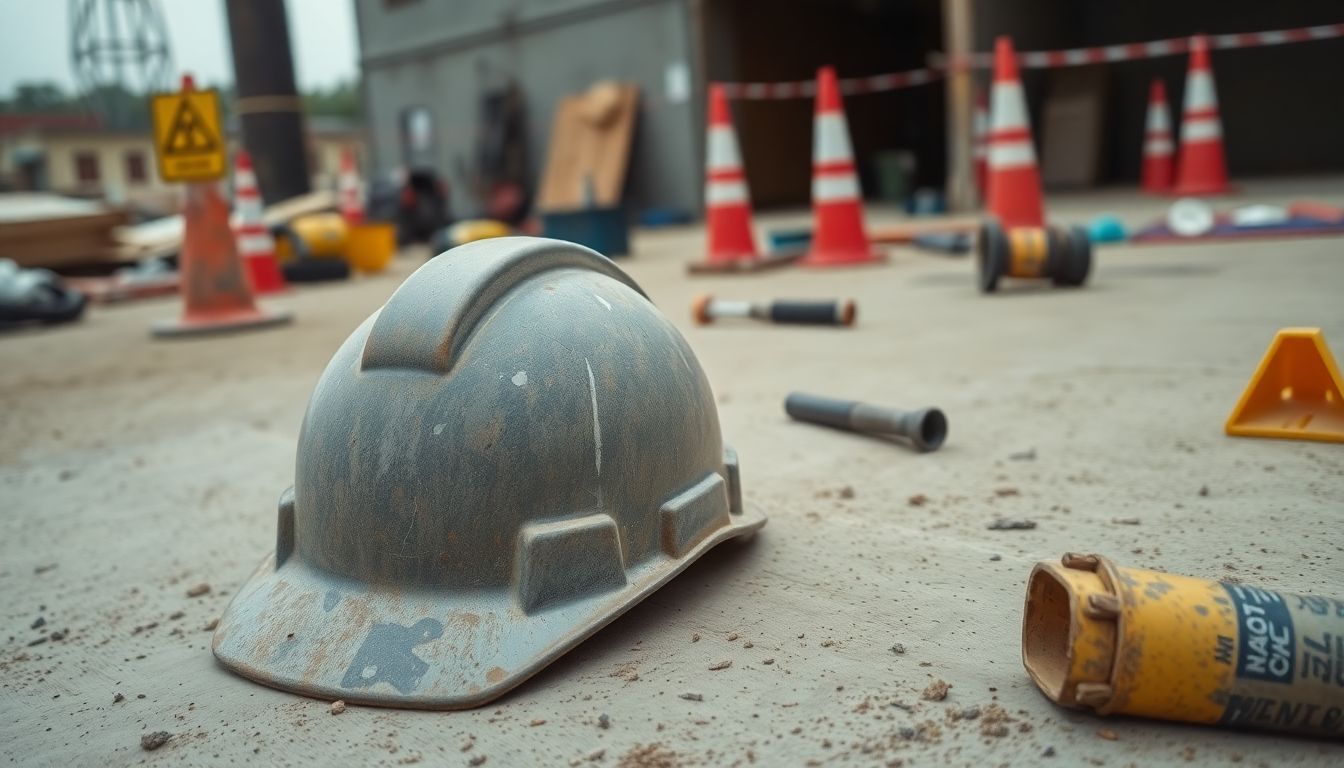Construction accidents can turn your life upside down. Each year, thousands of workers suffer injuries on job sites across the United States. This article will guide you through your rights and the steps to get fair compensation.
Learn how to protect yourself and your future after a workplace mishap.
Key Takeaways
- Construction workers have the right to a safe workplace, proper training, and safety equipment. If injured, they can claim workers’ compensation for medical costs and lost wages.
- Common construction accidents include falls from heights, struck-by incidents, trench collapses, electrical accidents, equipment malfunctions, and slip and falls.
- Victims must file claims within three years in New York, report accidents promptly, gather evidence, and seek immediate medical care to protect their rights.
- Specialized construction accident attorneys can help navigate complex laws, negotiate with insurance companies, and secure fair compensation for injured workers.
- Recent cases, like Joao Dias’ $15,228,000 scaffold fall settlement, highlight the importance of workplace safety and the potential for significant compensation in construction accident claims.
Your Rights as a Construction Worker

Moving from the introduction, let’s explore your specific rights as a construction worker. Construction workers have key protections under the law. These include the right to a safe workplace, proper training, and safety equipment.
If you get hurt on the job, you can claim workers’ compensation. This covers your medical costs and lost wages. Most construction workers qualify for these benefits, but some independent contractors may not.
You also have the right to file third-party claims. These are for injuries caused by someone other than your employer. For example, if faulty equipment hurts you, you can sue the maker.
Personal injury lawsuits let you claim for pain and suffering too. If you can’t work long-term, you may get Social Security Disability. I once helped a client get both workers’ comp and SSD after a severe fall.
It made a huge difference in his recovery.
Every construction worker has the right to return home safely at the end of each workday.
Common Types of Construction Accidents
Construction sites pose many risks to workers. Understanding common accidents can help prevent injuries and protect workers’ rights.
- Falls from heights: Workers often fall from scaffolding, ladders, or roofs. These accidents can cause severe injuries or death.
- Struck-by incidents: Falling objects like tools or materials hit workers. Hard hats help but don’t always prevent harm.
- Trench collapses: Unstable soil can cave in, trapping or crushing workers. Proper shoring prevents most collapses.
- Electrical accidents: Contact with live wires or faulty equipment leads to shocks or burns. Using proper safety gear is crucial.
- Equipment malfunctions: Faulty machinery can cause crushing injuries or amputations. Regular maintenance reduces risks.
- Slip and fall incidents: Wet surfaces, debris, or uneven ground cause workers to trip. Good housekeeping prevents many falls.
Filing a Construction Accident Claim
Filing a construction accident claim requires careful steps and documentation. Victims must act quickly to protect their rights and secure compensation.
- Seek immediate medical care. This step safeguards your health and creates a record of your injuries.
- Report the accident promptly to your supervisor. New York law requires timely notification to preserve your claim rights.
- Gather witness contact details. Eyewitness accounts strengthen your case and provide crucial evidence.
- Document the accident scene. Take photos of unsafe conditions and any equipment involved in the incident.
- Collect and save all medical records. Keep receipts for treatments, medications, and related expenses.
- Start an injury journal. Record daily pain levels, limitations, and how the injury impacts your life.
- Preserve physical evidence. Faulty equipment or tools should be kept as proof for your claim.
- File your claim within the legal time limit. In New York, you generally have three years from the accident date.
- Consult a construction accident attorney. Legal experts can guide you through the complex claim process.
- Gather all relevant documents. Compile accident reports, pay stubs, and any communication about the incident.
Understanding the types of accidents can help victims identify potential causes and liable parties.
Proving Liability in Construction Accidents
Proving liability in construction accidents requires meeting four key elements: duty, breach, causation, and damages. Construction companies must maintain a safe work environment for their employees.
To establish fault, victims need to show a violation of specific safety rules that directly caused their injury. Expert testimony often plays a crucial role in proving these violations.
Many construction accidents stem from breaches of the New York State Industrial Code‘s safety standards.
Victims must provide strong evidence to support their claims in construction accident cases. This includes photos of the accident scene, witness statements, and medical records. Safety logs and equipment maintenance records can also help show negligence.
Lawyers often work with accident reconstruction experts to build a solid case. Proving liability can be complex, but it’s vital for securing fair compensation for injured workers.
Compensation Available for Victims
Victims of construction accidents can get money for their losses. This money covers medical bills, lost wages, and pain. It also pays for future care and lost earning power. The amount depends on how bad the injury is and how it affects work.
Other factors include the level of fault and the strength of proof.
Insurance firms often try to pay less than victims deserve. Victims have three years in New York to file a claim. This time limit is crucial for getting fair pay. The next section will explain how to prove who is at fault in these cases.
Statute of Limitations for Claims
After learning about compensation options, it’s crucial to understand time limits for filing claims. The statute of limitations sets strict deadlines for legal action. For most construction accident cases, victims have three years from the injury date to file a claim.
Government entity claims require a notice within 90 days. Long-term exposure injuries allow three years from the discovery date.
Wrongful death claims stemming from workplace accidents must be filed within two years of the victim’s death. Some exceptions exist, such as the “discovery rule” for hidden injuries.
The law also pauses time limits for minors and mentally incapacitated individuals. Missing these deadlines can result in losing the right to seek compensation, so prompt action is vital.
How Attorneys Can Assist in Your Case
Attorneys play a vital role in construction accident cases. They gather evidence, interview witnesses, and build strong legal arguments to support your claim.
Benefits of hiring a specialized lawyer
Hiring a specialized lawyer for construction accident cases offers significant advantages. These legal experts possess unique skills and knowledge that can greatly impact the outcome of your claim.
- In-depth knowledge of construction laws: Specialized attorneys understand complex construction regulations and safety standards. This expertise helps them identify violations that may have led to your accident.
- Experience with similar cases: Construction accident lawyers have handled many similar claims. They know common pitfalls and effective strategies for success.
- Strong negotiation skills: These lawyers excel at dealing with insurance companies. They fight for fair compensation and don’t settle for lowball offers.
- Access to expert witnesses: Specialized attorneys have networks of industry experts. These professionals can provide crucial testimony to support your case.
- Understanding of injury types: Construction accident lawyers know the long-term effects of common job site injuries. This helps them accurately value your claim.
- Familiarity with local courts: These attorneys often have good relationships with local judges and court staff. This can help your case move smoothly through the legal system.
- Ability to handle complex paperwork: Construction accident claims involve lots of documents. Specialized lawyers manage this paperwork efficiently, meeting all deadlines.
- Knowledge of available benefits: These attorneys can help you get all benefits you’re entitled to, including workers’ comp and disability payments.
- No upfront costs: Most construction accident lawyers work on a contingency fee basis. You don’t pay unless they win your case.
- Peace of mind: Having a skilled lawyer handle your claim lets you focus on recovery. You can rest easy knowing a pro is fighting for your rights.
Services provided by construction accident attorneys
Construction accident attorneys offer vital support to injured workers. These legal experts provide a range of services to help victims secure fair compensation.
- Scene investigation: Attorneys visit accident sites to gather evidence and document conditions.
- Witness interviews: Lawyers talk to coworkers and others who saw the accident happen.
- Expert consultation: Attorneys work with safety experts to prove fault and assess damages.
- Insurance communication: Lawyers handle talks with insurance companies to protect victims’ rights.
- Rights education: Attorneys teach workers about their legal options after an accident.
- Recovery guidance: Lawyers explain different ways injured workers can get help and money.
- Claim filing: Attorneys manage paperwork and meet deadlines for accident claims.
- Faster processing: Legal help often speeds up the time it takes to resolve a claim.
- Maximum compensation: Lawyers fight to get victims the most money possible for their injuries.
- Legal representation: Attorneys speak for victims in court if a lawsuit is needed.
Recent Case Studies
Recent case studies offer valuable insights into construction accident compensation. Two notable examples include a scaffold fall case and a trench collapse lawsuit, which highlight common risks and legal outcomes.
Scaffold Fall Case
Joao Dias’ scaffold fall case shows the serious risks of unsafe work sites. Dias fell from an unsecured platform, suffering major injuries that needed many surgeries over three years.
His case led to a big win in court. The jury gave him $15,228,000 for medical costs, pain, and lost wages. This ruling found Blue Sea Construction, NYC Housing Authority, and Oceanhill, LLC at fault for breaking safety rules.
Dias’ case proves how vital proper safety measures are on job sites. Workers must know their rights to stay safe and get fair pay if hurt. Lawyers who know construction law can help injured workers get the money they need.
The next part will talk about the types of help victims can get after a work accident.
Trench Collapse Lawsuit
A recent trench collapse lawsuit highlighted the importance of workplace safety. The court ruled in favor of a worker who sued Gregg Edwards, owner of Edwards Enterprises, and a coworker for violating trench safety rules.
This case stressed strict liability and the need to follow safety standards on construction sites.
The lawsuit showed how workers can take legal action against employers who ignore safety laws. It proved that companies must protect their staff from dangers like trench collapses.
The court’s decision supports worker protection laws and holds employers responsible for keeping job sites safe.
Challenges in Construction Accident Claims
Construction accident claims often face tough hurdles. Injured workers must deal with many parties, making it hard to pin down who’s at fault. Employers might skimp on safety training, which adds to the problem.
Proving the full extent of injuries can be tricky, especially when long-term effects aren’t clear right away. Time limits also put pressure on victims. They must file their claims within two years, or they might lose their chance for fair pay.
These issues make it crucial for workers to act fast and get expert help.
Legal battles in construction accidents can drag on for months or even years. Workers may struggle to pay bills while waiting for their case to wrap up. Insurance companies often try to pay less than what’s fair.
They might argue that the worker was partly to blame for the accident. This tactic can cut down on how much money the victim gets. Dealing with these roadblocks takes skill and patience.
Next, we’ll look at how to handle insurance and legal matters in these complex cases.
Navigating Insurance and Legal Issues
Insurance companies often try to minimize payouts for construction accident claims. Legal experts can help you navigate complex policies and fight for fair compensation.
Similarities with Filing Worker’s Compensation Claim for Shipyard Accident Injuries
Construction and shipyard workers share key rights in filing work injury claims. Both groups can seek benefits without proving employer fault. They may get money for medical costs, rehab, and lost wages.
Workers must file claims within one year in both fields. If someone else caused the injury, workers can sue that party too. This applies to both construction and shipyard accidents.
Legal issues for construction and shipyard claims often overlap. Workers need to know their rights and the claim process. Getting expert help can make a big difference. Lawyers who know these fields can guide workers through complex rules.
They can help gather proof and fight for fair pay. With the right support, injured workers have a better shot at getting what they deserve.
Conclusion
Understanding your rights after a construction accident empowers you to seek fair compensation. Experienced lawyers can guide you through intricate legal processes and help you get the support you need.
Taking action promptly ensures you protect your interests and secure the best possible outcome. You have the right to a safe workplace and proper compensation if injured. Stay informed, act quickly, and seek expert help to safeguard your future after a construction site injury.
For further information on how these principles apply to similar scenarios, such as filing a worker’s compensation claim for shipyard accident injuries, please visit this detailed guide.
FAQs
1. What steps should I take after a construction accident?
Seek medical care right away. Report the incident to your supervisor. Document the accident scene with photos. Gather contact details from witnesses. Keep all medical records and bills. These actions protect your rights and support your claim for compensation.
2. How long do I have to file a construction accident claim?
Time limits vary by state. Most states allow two to three years from the accident date. Some permit only one year. Act fast to avoid losing your right to compensation. Consult a lawyer promptly to understand your specific deadline.
3. What types of compensation can I receive for a construction accident?
You may qualify for various benefits. These include medical expense coverage, lost wage replacement, and pain and suffering damages. You could also receive compensation for permanent disability or disfigurement. A skilled attorney can help maximize your potential recovery.
4. Can I sue my employer for a construction accident?
Generally, workers’ compensation limits lawsuits against employers. However, you may sue third parties responsible for your injury. These might include equipment manufacturers, subcontractors, or property owners. A legal expert can assess your case and identify all liable parties.
References
- https://rah.law/your-rights-as-an-injured-construction-worker/ (2024-11-24)
- https://www.sciencedirect.com/science/article/abs/pii/S0925753523000681
- https://www.grandellilaw.com/construction-accident-claims-labor-law-section-2416/ (2024-09-13)
- https://www.lawsb.com/legal-rights-after-construction-accident/
- https://www.njnylawyers.com/blog/how-to-prove-liability-in-construction-accidents/
- https://www.fightingforyou.com/resource-center/articles/how-to-prove-liability-in-construction-accidents/
- https://612injured.com/news/understanding-your-rights-a-guide-for-construction-injury-victims/ (2024-11-14)
- https://leeinjury.com/how-can-victims-of-construction-accidents-navigate-their-legal-options-for-compensation/
- https://www.wrshlaw.com/construction-accidents/statute-limitations.html
- https://lawisland.com/specialized-lawyer-for-construction-accident-claims-long-island/
- https://www.wsatlaw.com/how-a-construction-accident-attorney-can-help-you/ (2021-10-27)
- https://www.findlaw.com/injury/workers-compensation/should-i-hire-a-construction-accident-attorney.html (2023-09-12)
- https://www.expertinstitute.com/resources/insights/construction-worker-awarded-15-million-after-scaffolding-fall/
- https://www.lawyers24-7.com/new-yorks-new-scaffold-law-and-its-impact-on-construction-accidents/ (2024-08-22)
- https://www.yahoo.com/news/construction-worker-buried-bondurant-trench-121751701.html
- https://boyacklawgroup.com/2023/12/18/examining-construction-accident-claims-important-things-to-know/
- https://baumgartnerlawyers.com/blog/legal-implications-of-construction-site-accidents/
- https://www.prestoneasley.com/blog/navigating-legal-claims-for-shipyard-workers-recognizing-unique-hazards-and-protections/
- https://www.jonesact.com/jones-act-law/the-jones-act-information-center/workers-compensation-jones-act/

